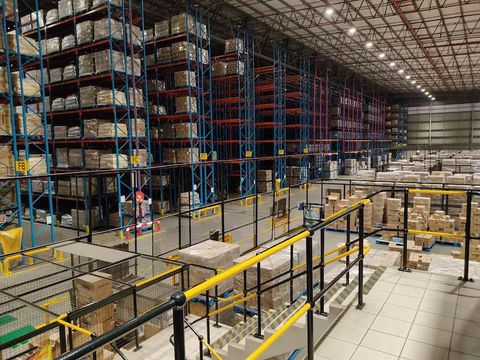A Complete Guide to the Rise of E-Commerce and Its Impact on Shopping Habits: Insights
E-commerce refers to the buying and selling of goods and digital content through online platforms. It exists because technology has made it possible to connect buyers and sellers without physical limitations. Over the past two decades, fast internet access, digital payments, and global logistics networks have allowed online shopping to grow rapidly.
Originally used for basic transactions, e-commerce has expanded into a wide digital ecosystem where people research products, compare brands, read reviews, and interact with global marketplaces. Mobile devices have accelerated this shift, making online shopping accessible anytime and anywhere.
Today, e-commerce plays a major role in modern lifestyles, influencing how individuals browse, make decisions, and engage with brands.

Importance
Understanding the rise of e-commerce is important because it shapes how people shop, communicate, and make financial decisions. Its growing influence matters for consumers, businesses, and governments.
Key reasons include:
-
Convenience: Users can access online platforms at any time, eliminating the need to visit physical stores.
-
Digital transformation: E-commerce supports innovation in payments, logistics, and customer experience.
-
Global access: People can explore items from different regions, contributing to global trade.
-
Changing habits: Many shoppers rely on digital reviews, comparison tools, and online browsing before making decisions.
-
Inclusivity: E-commerce provides access to regions with limited physical stores, helping communities access essential goods and information.
For consumers, these changes improve efficiency. For retailers, e-commerce provides insights into user behavior, helping them understand evolving expectations.
Recent Updates
The year 2024–2025 has seen several significant shifts in the e-commerce landscape. These updates reflect changes in technology, consumer behavior, and global regulations.
-
AI-powered personalization (2024): E-commerce platforms now use artificial intelligence to personalize recommendations, search results, and browsing experiences.
-
Rise of quick-commerce (2024): Rapid delivery services have grown in several countries, shortening delivery times for everyday items.
-
Sustainability focus (2025): Consumers increasingly prefer eco-friendly packaging and responsible logistics practices.
-
Social commerce expansion (2024–2025): Social platforms have added in-app shopping features, allowing users to complete purchases without leaving the app.
-
Cross-border shopping growth (2025): Improvements in digital payments and international logistics have increased global online shopping.
-
Voice-enabled shopping (2024): Smart assistants are increasingly used for reordering, reminders, and browsing.
Industry reports show continuous growth, supported by mobile internet usage, digital wallets, and strong interest in online product research.
Laws or Policies
E-commerce is strongly influenced by national and international regulations designed to ensure safety, protect consumer data, and promote fair competition. Policies vary across countries, but common regulatory areas include:
-
Data protection laws: Regions such as the European Union enforce strict rules under the General Data Protection Regulation (GDPR), ensuring privacy and data transparency.
-
Digital taxation policies: Several countries introduced new rules in 2024–2025 to regulate tax collection for digital transactions.
-
Consumer protection laws: Governments require clear return policies, transparent product descriptions, and proper labeling.
-
Cybersecurity frameworks: Nations implement security standards to reduce fraud, phishing, and data breaches.
-
Cross-border trade regulations: International agreements help with customs procedures, digital trade standards, and secure payment requirements.
In 2025, many governments are also focusing on digital identity verification and standardized digital payments to improve security in online transactions.
Tools and Resources
A variety of digital tools support users and researchers in understanding and participating in e-commerce activities. These resources help with shopping decisions, digital analytics, security checks, and accessibility.
-
Price comparison engines: Websites and apps allow users to compare product features and ratings.
-
Digital wallet platforms: Secure payment tools help users complete transactions safely and quickly.
-
E-commerce analytics tools: Platforms help individuals monitor website activity, online trends, and customer behavior.
-
Review and rating websites: Consumer review websites provide insight into product performance and user experiences.
-
Cybersecurity tools: Password managers, two-factor authentication apps, and safe browsing extensions enhance protection.
-
Logistics tracking apps: Delivery tracking tools help monitor shipment status in real time.
These tools allow users to make informed decisions and stay updated on digital shopping innovations.
Example Table: Evolution of Shopping Habits in the Digital Age
| Year | Key Behavior Change | Impact on Shopping Habits |
|---|---|---|
| 2010 | Basic online browsing | Early adoption of online research |
| 2015 | Mobile shopping growth | Increased use of smartphones |
| 2020 | Remote lifestyle shift | Surge in online transactions |
| 2024 | Social commerce and AI recommendations | Personalized experiences |
| 2025 | Sustainability and cross-border transparency | Responsible and global buying patterns |
FAQs
How has e-commerce changed shopping habits?
E-commerce has made shopping more flexible and research-driven. People often compare items online, check reviews, and use mobile devices for browsing before making decisions.
Is online shopping safe in 2025?
Yes, most platforms follow advanced security protocols, including encryption, two-factor authentication, and secure digital payments. Users should still follow safety practices such as using trusted websites and strong passwords.
What factors influence people’s online shopping decisions?
Common factors include convenience, mobile accessibility, digital reviews, sustainability preferences, transparent information, and user-friendly website design.
Are physical stores still important?
Yes, physical stores remain relevant, especially for hands-on viewing, quick purchases, and in-person experiences. Many retailers now combine physical and digital strategies through “hybrid shopping.”
What technology trends are shaping e-commerce in 2025?
AI recommendations, virtual try-on tools, digital wallets, voice shopping, and sustainable packaging innovations are some of the main trends transforming online shopping.
Conclusion
The rise of e-commerce continues to influence modern lifestyles and shopping habits across the world. With improved digital connectivity, advanced payment systems, and innovative user experience tools, online shopping has become a central part of everyday life.
New trends such as AI-powered personalization, sustainability efforts, social commerce, and global shopping networks are shaping how consumers browse and interact with online platforms. As governments introduce updated digital regulations and privacy protections, e-commerce is becoming safer and more transparent.






